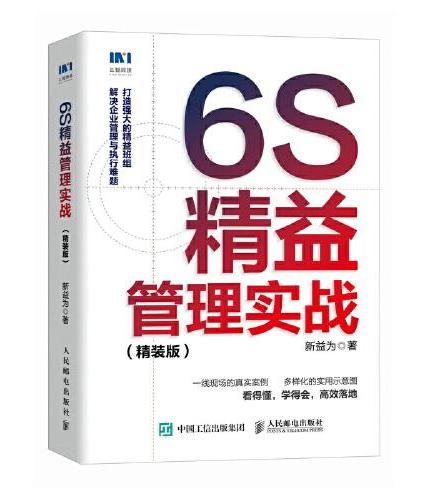新書推薦:

《
朋党之争与北宋政治·大学问
》
售價:HK$
99.7

《
甲骨文丛书·波斯的中古时代(1040-1797年)
》
售價:HK$
88.5

《
以爱为名的支配
》
售價:HK$
62.7

《
台风天(大吴作品,每一种生活都有被看见的意义)
》
售價:HK$
53.8

《
打好你手里的牌(斯多葛主义+现代认知疗法,提升当代人的心理韧性!)
》
售價:HK$
66.1

《
新时代硬道理 广东寻路高质量发展
》
售價:HK$
77.3

《
6S精益管理实战(精装版)
》
售價:HK$
100.6

《
异域回声——晚近海外汉学之文史互动研究
》
售價:HK$
109.8
|
| 內容簡介: |
|
《基本粒子物理学(英文)》提供了研究该领域的最前沿的知识,正在switzerland的cern进行的大型强子对撞机实验将在很大意义上改变我们对基础粒子物理和宇宙的理解。《基本粒子物理学(英文)》在实验和理论上的重大突破是研究生学习和科研工作者理解和解决lhc物理问题的优质教程。目次:粒子物理简述;狄拉克方程和量子电动力学;规范原理;强子;探测器和测量;中微子振荡和ckm测量;e+e—对撞机物理;强子对撞机;higgs物理。
|
| 目錄:
|
Preface
1 Particle Physics:A Brief Overview
1.1 Handedness in the Equation of Motion
1.2 Chiral Interactions
1.3 Fundamental Strong Interaction
1.4 Table of Elementary Particles
1.5 Mass and Charge
1.6 Hypercharge Interaction ofthe Standard Model
1.7 Higgs Mechanism
1.8 Program of Study
1.9 Exercises
1.10 References and Further Reading
2 Dirac Equation and Quantum Electrodynamics
2.1 Natural Units and Conversions
2.2 Relativistic Invariance
2.3 Pauli-Dirac Representation and Connection with Nonrelativistic
QM
2.3.1 Constants ofMotion
2.3.2 Velocity in Dirac Theory
2.4 Probability Current
2.5 Free—Particle Solutions in the Pauli-Dirac
Representation
2.6 Antiparticles
2.6.1 Charge-Conjugation Symmetry
2.7 Lorentz Transformations
2.7.1 Lorentz Invariance ofthe Dirac Equation
2.7.2 Lorentz-Invariant Lagrangians and the
Euler-Lagrange砌uations
2.8 Weyl Representation
2.8.1 Weyl Spinor Tw0—Component Formalism
2.8.2 Free—Particle Solutions via Lorentz Boost Transform
2.9 Projection Operators and Completeness Relations
2.10 Discrete Lorentz nansformations
2.11 Covariant Form ofthe Electromagnetic Interaction
2.12 Relativistic Propagator Theory
2.12.1 Source Terms:Coulomb Scatte—ng Potential
2.12.2 Photon Propagator
2.12.3 Massive sptn-1 Propagator
2.I3 S-Matrix and Feynman Rules for QED
2.13.1 Cross Sections and DecaF Rates
2.13.2 Worked Example:Mort Scatte—ng
2.14 Spin Statistics
2.15 Exercises
2.16 References and Further Reading
3 Gauge Principle
3.1 Global Internal Symmetries
3.2 Local Gauge Symmetries
3.3 S u2and the Weak Interaction
3.3.1 Gauge Transformations ofMassive spin一1
Four-Potentials
3.3.2 Non-Abelian Four-Potentials
3.3.3 Weak and Electromagnetic Interactions
3.4 Electroweak Gauge Interactions
3.5 Gauge Interaction of QCD
3.6 Structure of Elementary Matter
3.7 Spontaneous Symmetry Breaking
3.8 Higgs Mechanism
3.8.1 Minimum Single—Doublet ofComplex Scalar Fields
3.9 Glashow—Weinber9—Salam Theory ofthe Electroweak
Interactions
3.10 Neutral·Current Feynman Rules
3.11 Fermion Masses and the CKM Mixing Matrix
3.12 Neutrino Masses and the CKM Mixing Matrix
3.13 Interaction Vertices in the Standard Model
3.14 Higgs Mechanism and the Nambu—Goldstone Theorem
3.15 Goldstone Boson Equivalence
3.16 Anomaly Cancellation
3.17 Exercises
3.I8 References and Further Reading
4 Hadrons
4.1 Color Antiscreening and Quark Confinement
……
5 Detectors and Measurements
6 Neutrino Oscillations and CkM Measurements
7 Collider Physics
8 Hadron Colliders
9 Higgs Physics
|
|









